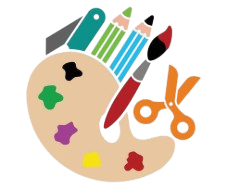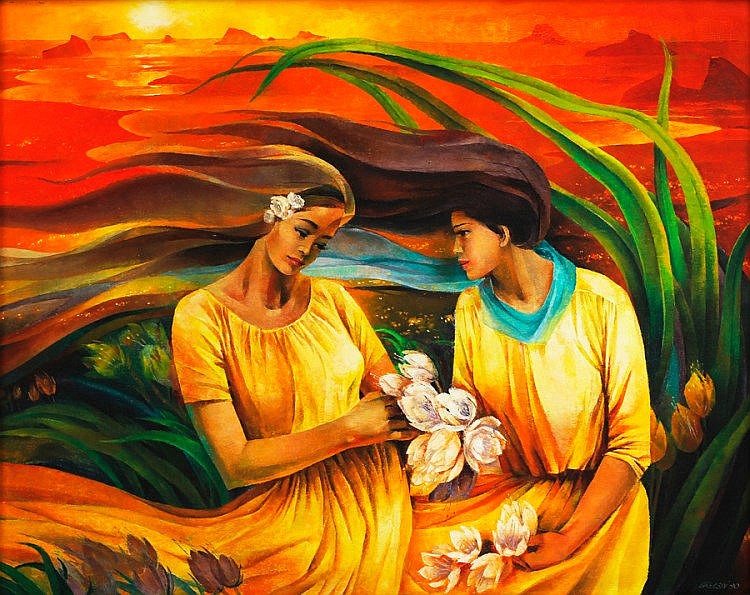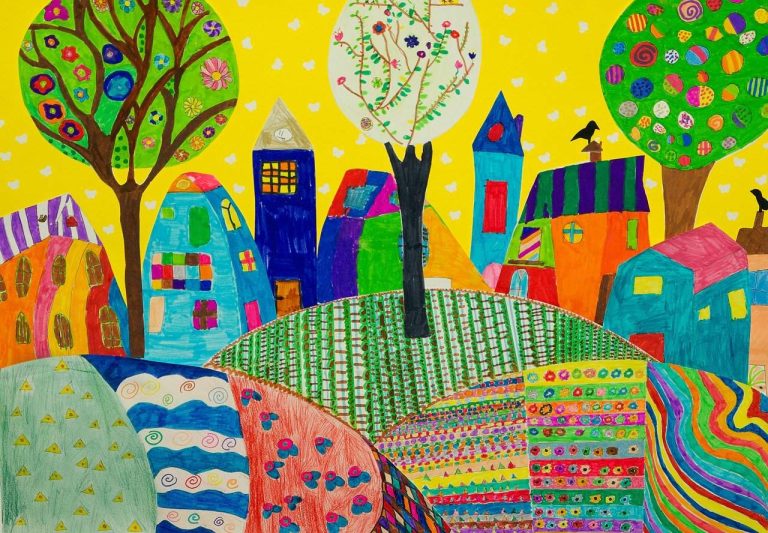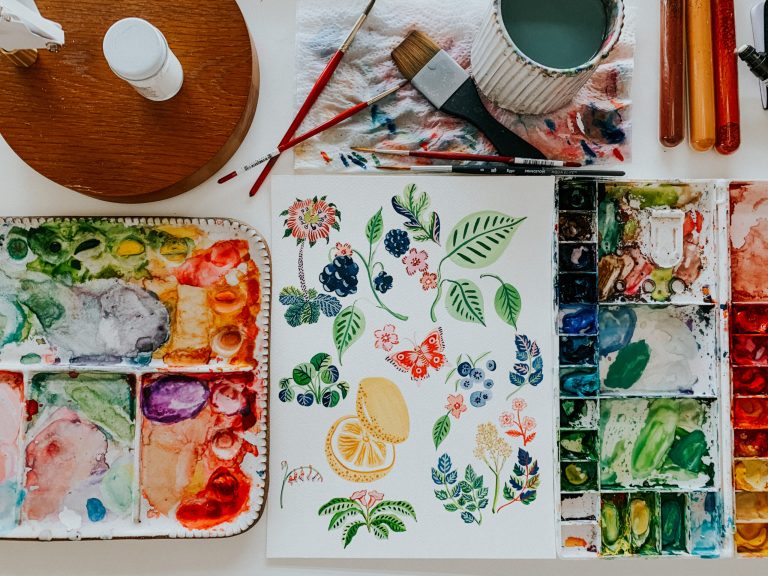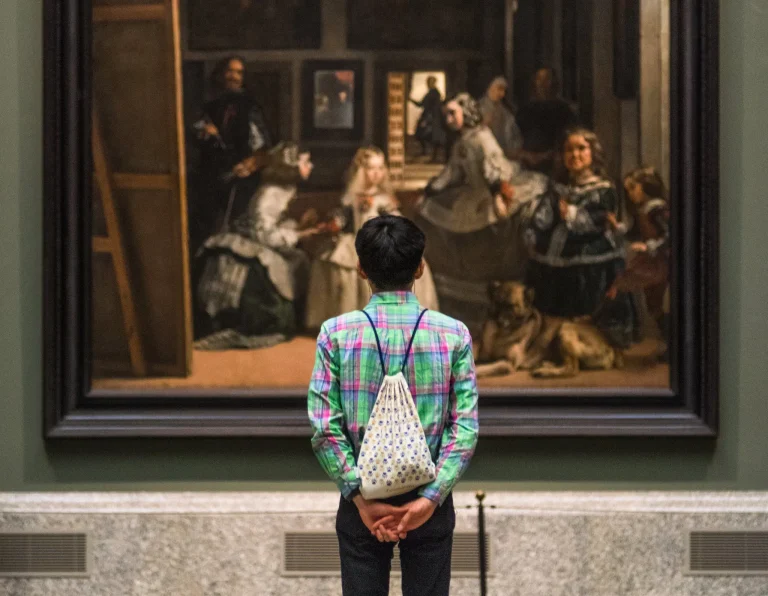Beyond the Frame: How Works of Art Communicate the Soul’s Language
One of the earliest ways that people have expressed themselves is through art; from cave walls to gallery halls, we have always used shapes, colors, and forms to tell stories, comprehend the world, and comprehend ourselves.
But why is a group of brushstrokes on canvas so potent? Why do we stand silently in front of a painting, enthralled with an emotion that defies explanation? And why do some pieces of art, even those that date back centuries, still evoke strong emotions in us today?
The message is more important than the medium, whether it be digital, paint, or sculpture. The language of art transcends words. It evokes feelings, provokes discussion, reflects our past, and occasionally even alters our perspective on the world.
Let’s examine the realm of artwork in more detail:
1. Art as a Mirror of Humanity
Art is more than decoration it is a mirror that reflects the human experience.
Since ancient times, artists have captured the essence of their civilizations. Egyptian tomb paintings told stories of the afterlife. Greek sculptures immortalized the human form. Medieval icons brought religious narratives to life. And during the Renaissance, art exploded with realism, emotion, and exploration of science, anatomy, and philosophy.
Art doesn’t just show what people saw it shows what they believed, feared, and hoped for. Through it, we witness not only what was, but what mattered.
Even today, artists use their work to reflect modern struggles social justice, identity, mental health, climate change bringing awareness in a way statistics and speeches never could.
2. The Emotion Inside the Image
What separates a good artwork from a great one? Emotion.
The best art makes us feel something. It doesn’t just depict reality it distills the essence of a moment or mood.
- Van Gogh’s “Starry Night” isn’t just a night sky it’s turmoil, wonder, and longing.
- Frida Kahlo’s self-portraits aren’t just likenesses they are raw stories of pain, resilience, and identity.
- Picasso’s “Guernica” isn’t just abstract chaos it’s a scream against the horrors of war.
When we look at art, we aren’t just observing we’re connecting. And in that connection, we often discover parts of ourselves.
3. Art Across Cultures and Time
One of the most beautiful things about art is how diverse and universal it is.
Every culture has developed its own artistic language:
- Japanese ukiyo-e prints capture fleeting beauty and nature.
- Indigenous Australian dot paintings map stories and ancestral journeys.
- African masks embody spiritual forces and tribal identity.
- Islamic art uses geometric patterns to reflect the infinite.
Yet despite these differences, there’s a shared truth: all artworks, in every corner of the world, are born from a desire to express.
Art bridges gaps between people, across time and cultures. It shows us that while our traditions may differ, our emotions love, fear, joy, sorrow are deeply human and universal.
4. The Changing Face of Art
Art has evolved tremendously from cave paintings to canvas, from sculpture to screens.
- Photography changed the way we capture reality.
- Modern art broke rules, encouraging concept over form.
- Digital art and NFTs have opened doors to new expressions and ownership models.
- Street art has moved from vandalism to respected social commentary, as seen in the works of artists like Banksy.
What matters today isn’t the medium it’s the message. Art is no longer confined to museums. It’s on our streets, our screens, our social feeds. It’s more accessible, more global, and more diverse than ever before.
And that’s a good thing.
5. The Artist’s Role in Society
Artists have always held a unique position in society observers, storytellers, critics, visionaries.
- They challenge norms.
- They ask uncomfortable questions.
- They offer new perspectives.
In times of crisis, art becomes resistance. In times of celebration, it becomes expression. And in the quiet in-betweens, it becomes reflection.
As our world grows more complex, divided, and fast-paced, art remains one of the few places where we can pause to feel, to question, to dream.
6. How to Experience Art More Deeply
You don’t need an art degree to appreciate art. You just need openness.
Next time you encounter a painting, sculpture, or photograph:
- Slow down. Give it more than a glance.
- Look beyond the obvious. Notice colors, shapes, and hidden details.
- Ask how it makes you feel. Not what it is, but what it says to you.
- Learn about the artist. Understanding their background often adds new layers of meaning.
- Trust your reaction. There’s no “right” answer just your experience.
Art isn’t about understanding everything. It’s about connecting with something greater than words.
Final Thoughts: Why Art Matters
In a world increasingly driven by logic, speed, and productivity, art reminds us to feel.
It reminds us of beauty, sorrow, passion, rebellion, and truth. It reminds us that we are more than our routines we are thinkers, dreamers, creators.
Art is not a luxury. It is a necessity.
So whether you’re walking through a gallery, scrolling through digital illustrations, or doodling in your own sketchbook pause for a moment. Look. Feel. Reflect.
Because within every artwork lies a piece of someone’s soul and maybe, if you look closely enough, a piece of yours too.
